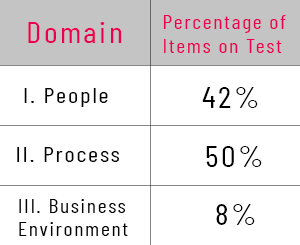Changes to the Project Management Professional (PMP)® Exam and How They Affect You
Earlier in 2020 The Project Management Institute (PMI)® announced changes to the Registered Education Provider (REP) program and the Project Management Professional Exam(PMP® Exam). The current REP program will be retired at the end of 2020 and be replaced with the Authorized Training Provider (ATP) program. Cprime became an ATP in July 2020, which allows us access to the proprietary PMI courseware, the only approved course to prepare for the PMP® Exam. Not to worry though, if you took a course with us and need to claim your PDUs, all of our courses with approved credits will be transferred to our new ATP profile.
We’ve had a lot of questions about these changes so we wanted to share what we’ve learned with our clients. The below Q&A featuring Cprime Instructor Harlan Bridges, who is already approved to teach the new course, is meant to quickly and concisely inform you what to expect of the PMP® exam changes.
Q&A’s
- When does the PMP® exam change?
-
- PMI announced that the new exam will begin January 2, 2021.
- Are there big changes to the PMP® exam?
-
- This exam update represents a major change. The content has been completely restructured and will be split 50-50 between predictive (traditional) project management and agile project management.
- How is the new content organized?
-
- PMI removed the 10 Knowledge Areas, the 5 Process Groups and the 49 Processes that made up PMBOK 6. These have been replaced with Domains, Tasks, Enablers, Deliverables, and Tools.
- What are the new domains?
-
- The new domains are People, Process, and Business Environment.
- How are the questions divided per domain?
-
- The People Domain makes up 42% of the exam. The Process Domain makes up 50% of the exam. The Business Environment Domain makes up 8% of the exam.
- What happened to the 49 Processes?
-
- PMI has replaced the 49 Processes with 35 Tasks. Also gone are the Inputs, Tools and Techniques, and the Outputs for those 49 Processes.
- Is there a lot of memorization for the exam?
-
- While memorization will still be required and useful, the exam content focuses more on application of the knowledge. Questions will require the student to analyze a situation and correctly apply the appropriate knowledge (Domain, Task, Enabler, Tool) to the situation.
- What other items are different?
-
- There is a heavy emphasis on interpersonal skills like servant leadership, emotional intelligence, communication, and relationship building.
- Is the PMP® exam still multiple choice?
-
- The structure and format of the exam will remain basically the same. It will be 200 multiple choice questions with a four-hour time limit.
- What should I study for the new PMP® exam?
-
- The exam content is based on the PMBOK 7 and the PMI Agile Practice Guide. The new PMBOK 7 has not been released yet. PMBOK 7 is expected to be released sometime in 2021, but no date has been announced.
- What are the major differences between the PMP® 7 Exam and PMP® 6 Exam?
Based on my review of the clone questions and the courseware, here are the major differences between the two exams.
- Knowledge Areas, Process Groups, and ITTO’s are gone – Processes are now known as Tasks
- Replaced with Domains, Tasks, Enablers, Deliverables, and Tools
- Most of the Tasks (formerly Processes) are new, at least in name – there used to be 49 Processes, now there are 35 Tasks
- Organized into 3 Domains: People, Process, and Business Environment
- Greater emphasis on interpersonal skills
- Approximately 50-50 split between agile and predictive methodologies
- Less memorization and more interpretative in nature – i.e. questions are more situational
- In order to correctly answer questions, the student will need to be able to analyze the situation and correctly identify the needed task(s) and then apply it to the situation
- Test is more focused on being able to apply knowledge than on memorization

This table lists the Domains, Tasks, and Enablers for each task as well as the percentage of the PMP® exam allotted to each Domain.
| Domain 1: People (42%) | |
|---|---|
| Task 1 | Manage conflict
|
| Task 2 | Lead a team
|
| Task 3 | Support team performance
|
| Task 4 | Empower team members and stakeholders
|
| Task 5 | Ensure team members/stakeholders are adequately trained
|
| Task 6 | Build a team
|
| Task 7 | Address and remove impediments, obstacles, and blockers for the team
|
| Task 8 | Negotiate project agreements
|
| Task 9 | Collaborate with stakeholders
|
| Task 10 | Build shared understanding
|
| Task 11 | Engage and support virtual teams
|
| Task 12 | Define team ground rules
|
| Task 13 | Mentor relevant stakeholders
|
| Task 14 | Promote team performance through the application of emotional intelligence
|
| Domain 2: Process (50%) | |
|---|---|
| Task 1 | Execute project with the urgency required to deliver business value
|
| Task 2 | Manage communications
|
| Task 3 | Assess and manage risks
|
| Task 4 | Engage stakeholders
|
| Task 5 | Plan and manage budget and resources
|
| Task 6 | Plan and manage schedule
|
| Task 7 | Plan and manage quality of products/deliverables
|
| Task 8 | Plan and manage scope
|
| Task 9 | Integrate project planning activities
|
| Task 10 | Manage project changes
|
| Task 11 | Plan and manage procurement
|
| Task 12 | Manage project artifacts
|
| Task 13 | Determine appropriate project methodology/methods and practices
|
| Task 14 | Establish project governance structure
|
| Task 15 | Manage project issues
|
| Task 16 | Ensure knowledge transfer for project continuity
|
| Task 17 | Plan and manage project/phase closure or transitions
|
| Domain 3: Business Environment (8%) | |
|---|---|
| Task 1 | Plan and manage project compliance
|
| Task 2 | Evaluate and deliver project benefits and value
|
| Task 3 | Evaluate and address external business environment changes for impact on scope
|
| Task 4 | Support organizational change
|



